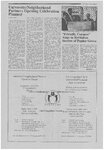West View | 2003-05-01 | Page 1
| Type | issue |
| Date | 2003-05-01 |
| Paper | West View |
| Language | eng |
| City | Salt Lake City |
| County | Salt Lake |
| Rights | In Copyright (InC) |
| Rights Holder | West View Media, Salt Lake City, Utah |
| Publisher | Digitized by J. Willard Marriott Library, University of Utah |
| ARK | ark:/87278/s6q5tajb |
| Reference URL | https://newspapers.lib.utah.edu/ark:/87278/s6q5tajb |
Page Metadata
| Type | page |
| Date | 2003-05-01 |
| Paper | West View |
| Language | eng |
| City | Salt Lake City |
| County | Salt Lake |
| Page | 1 |
| Reference URL | https://newspapers.lib.utah.edu/ark:/87278/s6q5tajb/30837661 |














